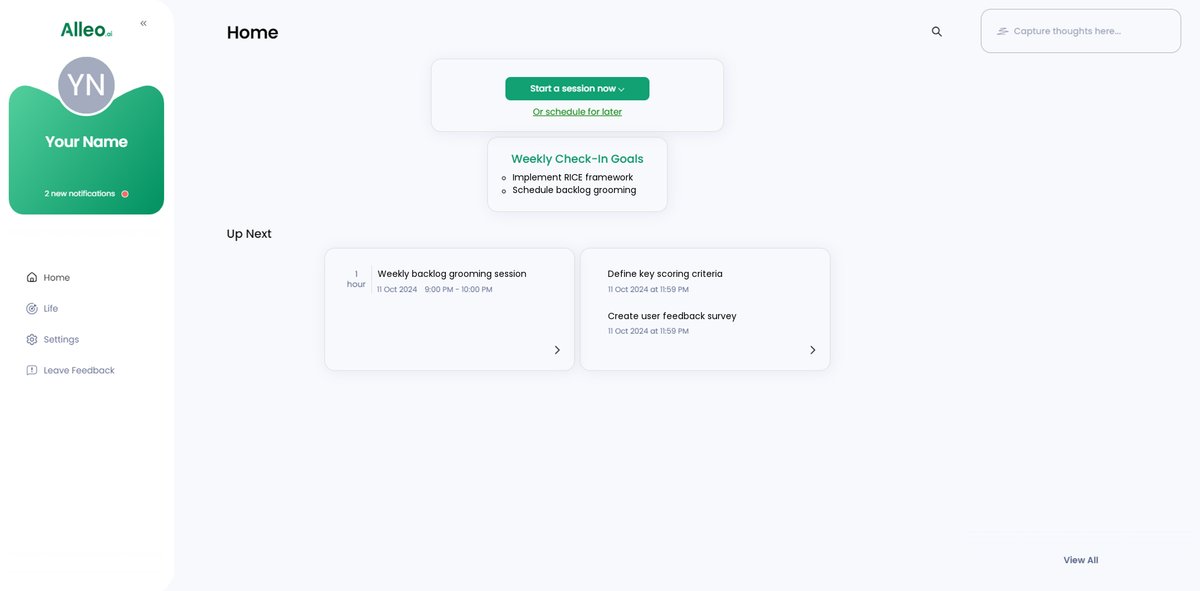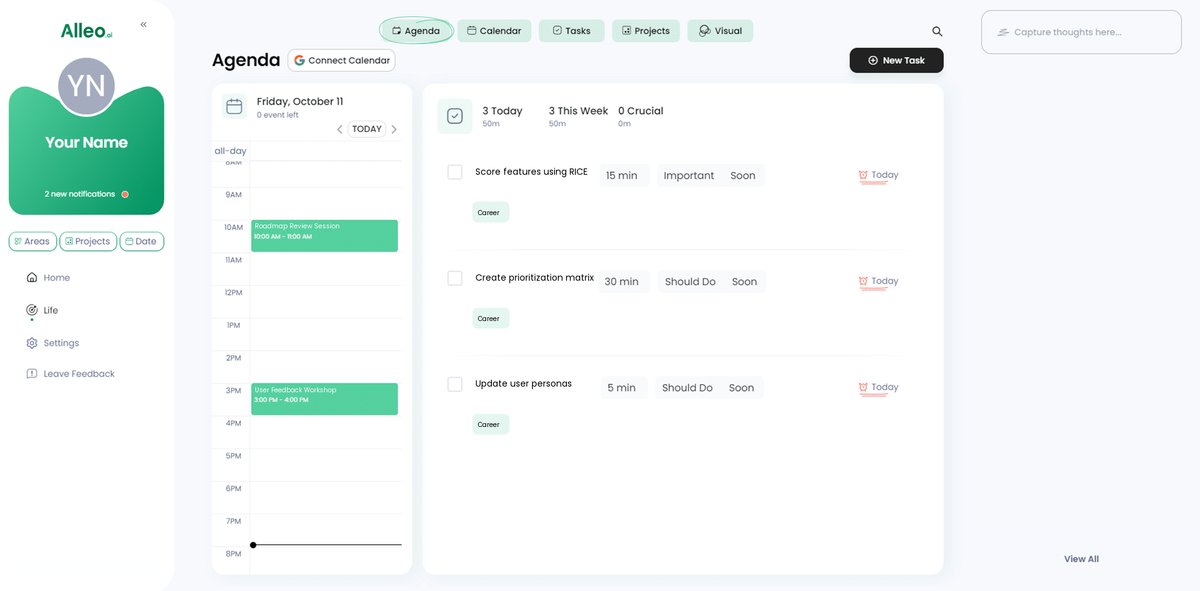The Ultimate Guide to Effective Product Roadmap Prioritization for Project Managers
Are you struggling to decide which features to prioritize on your product roadmap?
As a life coach, I’ve helped many professionals navigate these challenges. I understand the frustration and overwhelm that comes with feature prioritization and product roadmap prioritization techniques.
In this article, you’ll discover systematic techniques for effective product roadmap prioritization. We’ll explore strategies like the RICE framework for agile product roadmap planning, regular backlog grooming, and aligning roadmaps with business goals through KPI-driven roadmap prioritization.
Ready to streamline your prioritization process and improve your product backlog management?
Let’s dive into these product roadmap prioritization techniques.

Understanding the Pain Points of Feature Prioritization
Product roadmap prioritization techniques can be overwhelming for many product managers. It’s not just about deciding what comes next; it’s about balancing competing demands from stakeholders, customers, and team members in agile product roadmap planning.
In my experience, poor prioritization often leads to delays and frustration. Teams may feel demotivated when they see their hard work not translating into impactful features, highlighting the importance of effective feature prioritization methods.
Many clients initially struggle with aligning their product backlog management to strategic goals. This lack of alignment can result in wasted resources and missed opportunities in sprint planning and roadmap alignment.
Moreover, without a structured approach to product roadmap prioritization techniques, it’s easy to overlook critical user needs. This can result in products that fail to resonate with the target audience, ultimately impacting the business’s success and ROI-based product feature prioritization.
To illustrate, several companies have faced setbacks due to ineffective prioritization. These challenges highlight the importance of adopting systematic techniques like the RICE framework and regular backlog grooming as part of prioritization frameworks for project managers.
Understanding these struggles is the first step. Now, let’s explore actionable solutions for product roadmap prioritization techniques.

A Roadmap to Effective Product Prioritization
Overcoming this challenge requires a few key steps. Here are the main areas to focus on for effective product roadmap prioritization techniques:
- Implement RICE Framework for Feature Scoring: Use the RICE framework as one of the feature prioritization methods.
- Conduct Regular Backlog Grooming Sessions: Schedule consistent grooming sessions for product backlog management and to keep priorities updated.
- Align Roadmap with Strategic Business Goals: Map features to business objectives for better alignment in Agile product roadmap planning.
- Use Weighted Scoring for Criteria Evaluation: Apply a weighted scoring model to prioritize features effectively, incorporating stakeholder input in roadmap creation.
- Gather and Incorporate User Feedback Data: Collect user feedback to inform prioritization decisions and support ROI-based product feature prioritization.
Let’s dive into these product roadmap prioritization techniques!
1: Implement RICE framework for feature scoring
Implementing the RICE framework can significantly improve your product roadmap prioritization techniques and feature prioritization methods.
Actionable Steps:
- Educate Your Team on RICE Framework: Conduct a workshop to explain the components of RICE (Reach, Impact, Confidence, Effort) and how to score each component, aligning with agile product roadmap planning.
- Apply RICE to Current Backlog: Select a set of features and score them using the RICE framework. Review and adjust the scores as a team to reach a consensus, enhancing product backlog management.
- Regularly Review and Adjust RICE Scores: Schedule monthly review sessions to reassess RICE scores based on new data and feedback, ensuring alignment with business priorities and KPI-driven roadmap prioritization.
Explanation:
These steps matter because they introduce a systematic approach to feature scoring, ensuring that your product roadmap prioritization techniques align with strategic goals.
Regular reviews allow you to adapt to changing market conditions and stakeholder input in roadmap creation. For a deeper understanding of the RICE framework, check out this guide on RICE scoring.
Key benefits of implementing the RICE framework include:
- Improved objectivity in feature evaluation and ROI-based product feature prioritization
- Better alignment of priorities with business goals and product vision and roadmap integration
- Enhanced team collaboration in decision-making, supporting sprint planning and roadmap alignment
Consistent application of the RICE framework will help you maintain a well-prioritized backlog, setting a solid foundation for effective product management and agile product roadmap planning.

2: Conduct regular backlog grooming sessions
Regular backlog grooming sessions are crucial for maintaining a well-prioritized and efficient product roadmap prioritization technique.
Actionable Steps:
- Schedule Weekly Grooming Sessions: Set aside dedicated time each week for backlog grooming, ensuring all stakeholders are available to provide input for agile product roadmap planning.
- Use a Prioritization Matrix: Develop a matrix to categorize backlog items by urgency and importance. Regularly update it to reflect current priorities using feature prioritization methods.
- Incorporate Cross-Functional Feedback: Gather insights from different departments, such as sales and customer support, to inform prioritization and align with broader goals, enhancing stakeholder input in roadmap creation.
Explanation:
These steps matter because they help keep the backlog organized and aligned with strategic objectives, supporting effective product backlog management.
Regular grooming sessions ensure that priorities are consistently reviewed and adjusted based on feedback and changing conditions, facilitating sprint planning and roadmap alignment.
For a deeper understanding of backlog management, check out this guide on product backlog management.
Consistent backlog grooming will help you stay focused and deliver impactful features that align with your business goals, supporting product vision and roadmap integration.

3: Align roadmap with strategic business goals
Aligning your product roadmap prioritization techniques with strategic business goals ensures that your product development aligns with the broader objectives of your organization.
Actionable Steps:
- Define Clear Business Goals: Collaborate with leadership to outline top strategic objectives for the upcoming quarter or year. Ensure these goals are communicated clearly to the team, guiding your agile product roadmap planning.
- Map Features to Business Goals: Create a visual map linking each feature to specific business objectives. Use this map to guide feature prioritization methods during roadmap planning.
- Review Alignment Regularly: Schedule quarterly reviews to ensure the roadmap remains aligned with evolving business goals. Adjust feature priorities to stay on track with your product backlog management.
Explanation:
These steps matter because they help keep your product development aligned with the company’s strategic direction. Regular reviews ensure that your roadmap adapts to changes in business priorities, incorporating stakeholder input in roadmap creation.
For more insights on aligning product features with business goals, check out this guide on product management certification.
Key indicators of successful roadmap-business goal alignment:
- Increased stakeholder buy-in for product initiatives
- Improved resource allocation efficiency
- Higher ROI on product development efforts, demonstrating effective ROI-based product feature prioritization
Staying aligned with strategic goals will help you deliver features that contribute to your organization’s success, ensuring effective product roadmap prioritization techniques.

4: Use weighted scoring for criteria evaluation
Using weighted scoring for criteria evaluation helps prioritize features based on their impact and feasibility, a key aspect of product roadmap prioritization techniques.
Actionable Steps:
- Identify Key Criteria for Scoring: Define the most critical criteria for feature evaluation, such as user impact and revenue potential. Assign weights to each criterion based on its importance, aligning with your product vision and roadmap integration strategy.
- Score Features Based on Criteria: Evaluate each feature against the defined criteria using the weighted scoring model. Calculate total scores to determine feature priorities, incorporating ROI-based product feature prioritization.
- Validate Scores with Stakeholders: Present the scoring results to key stakeholders and gather their feedback. Adjust scores and weights if necessary to reflect stakeholder input in roadmap creation.
Explanation:
These steps matter because they provide a structured and data-driven approach to feature prioritization, essential for effective product backlog management.
By involving stakeholders, you ensure that the scoring reflects collective insights and aligns with strategic goals, enhancing sprint planning and roadmap alignment.
For more detailed guidance, read this comprehensive guide on weighted scoring models.
This method will help you make informed decisions and maintain a well-prioritized product roadmap, supporting agile product roadmap planning.

5: Gather and incorporate user feedback data
Gathering and incorporating user feedback data is essential for ensuring your product meets user needs and expectations, which is a crucial aspect of product roadmap prioritization techniques.
Actionable Steps:
- Conduct User Surveys and Interviews: Regularly collect feedback from users through surveys and interviews. Analyze the data to identify common pain points and feature requests, informing your Agile product roadmap planning.
- Use Feedback Tools: Implement tools like Hotjar or Userpilot to gather real-time user insights. Integrate these insights into your prioritization process and product backlog management.
- Create User Personas: Develop detailed user personas based on feedback data. Use these personas to guide feature prioritization methods and ensure user needs are met.
Explanation:
These steps matter because they provide a user-centric approach to product roadmap prioritization techniques. By using tools to gather real-time insights, you ensure that your product evolves according to user needs, aligning with sprint planning and roadmap alignment.
For more information on understanding user needs, check out this guide on user needs from Interaction Design Foundation.
Effective strategies for incorporating user feedback:
- Establish a continuous feedback loop with users, supporting stakeholder input in roadmap creation
- Prioritize features based on frequency of user requests, utilizing ROI-based product feature prioritization
- Conduct A/B testing to validate user preferences, enhancing your product vision and roadmap integration
Incorporating user feedback will help you develop features that resonate with your audience, enhancing the overall success of your product and supporting KPI-driven roadmap prioritization.

Partner with Alleo on Your Product Roadmap Prioritization
We’ve explored the challenges of feature prioritization and the strategies to address them. Did you know you can work directly with Alleo to make this journey easier and faster? Our product roadmap prioritization techniques can streamline your process.
Start by setting up an Alleo account. Create a personalized plan tailored to your needs, incorporating agile product roadmap planning principles.
Alleo’s AI coach will help you prioritize features, manage your product backlog, and align your roadmap with business goals using effective feature prioritization methods.
Receive regular follow-ups on your progress. Alleo handles changes and keeps you accountable with text and push notifications, ensuring your sprint planning and roadmap alignment stay on track.
Ready to get started for free? Let me show you how to implement these product roadmap prioritization techniques!
Step 1: Log in or Create Your Alleo Account
To begin your product roadmap prioritization journey, simply Log in to your account or create a new one to access Alleo’s AI coach and start optimizing your feature prioritization process.

Step 2: Choose Your Focus Area
Select “Setting and achieving personal or professional goals” to align your product roadmap prioritization efforts with your broader career objectives, helping you create a more impactful and strategically sound product strategy.

Step 3: Select “Career” as Your Focus Area
Choose “Career” as your focus area to align your product roadmap prioritization efforts with your professional goals, helping you make strategic decisions that advance your career while improving your product management skills.

Step 4: Starting a coaching session
Begin your journey with Alleo by scheduling an intake session, where you’ll discuss your product roadmap challenges and set up a personalized plan to improve your prioritization process.

Step 5: Viewing and managing goals after the session
After your coaching session, check the Alleo app’s home page to review and manage the product roadmap prioritization goals you discussed, ensuring you stay on track with your feature prioritization strategy.

Step 6: Adding events to your calendar or app
To track your progress in solving prioritization challenges, use Alleo’s calendar and task features to schedule regular backlog grooming sessions, RICE framework reviews, and user feedback collection activities.

Wrapping Up Your Prioritization Journey
Prioritizing your product roadmap can feel daunting, but it’s crucial for your success. Product roadmap prioritization techniques are essential for effective project management.
Remember, implementing the RICE framework, regular backlog grooming, and aligning with strategic goals can transform your process. Don’t forget to use weighted scoring and gather user feedback to inform your decisions. These feature prioritization methods and product backlog management practices are key to agile product roadmap planning.
You’re not alone in this journey. I’ve seen many managers overcome these challenges with these techniques. Prioritization frameworks for project managers can greatly improve roadmap creation.
Try these steps, and see how they work for you. And for an extra boost, consider using Alleo to streamline your efforts in product roadmap prioritization techniques.
You’ve got this! Ready to prioritize effectively?
Start with Alleo today.